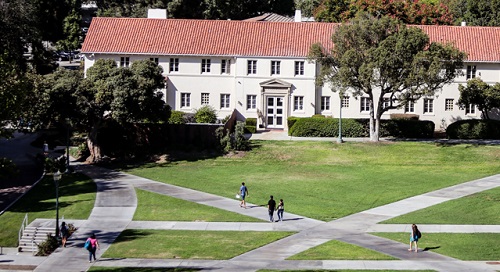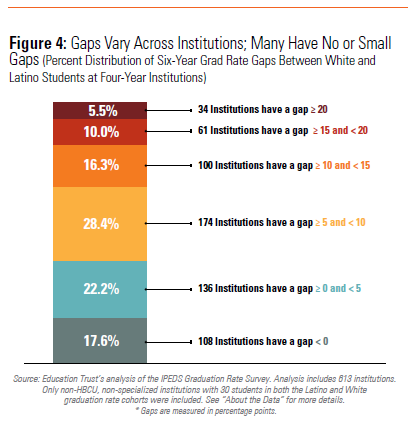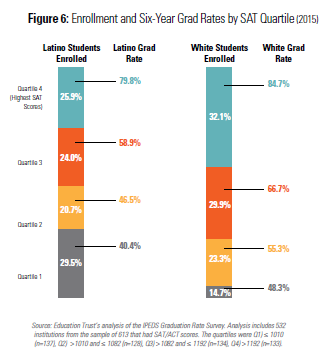
Share On Social!
Getting a college education is linked to better employment, better health, and active volunteerism and voting.
In fact, people with a bachelor’s degree earn $25,000 more than those without.
Unfortunately, even as Latinos are enrolling in college at an all-time high, they earn four-year degrees at a far less rate (18%) than their white peers (44%).
A new report offers a solution: Latinos should enroll at the right school. 
The report, published by The Education Trust, found that closing the educational gap can in part happen by changing where Latino students enroll.
Nearly 25% of all Latino freshmen enroll in the “most selective” institutions where most freshmen graduate. Nearly 30% enroll at more accessible institutions where a few complete degrees.
In contrast, about 33% of all white freshmen enroll at the “most selective” institutions. Less than 20% enroll at the least selective.
“Latinos make up 18% of the U.S. population but just 8.5% of students at selective institutions, the very places that have more resources to help students cross the finish line,” the report said. “Research shows that students who attend these colleges and universities are more likely to complete their degrees.”
How California Shows Promise for Latino College Students
California is showing how to remedy the Latino enrollment and graduation dilemma.
Five California (38.39% Latino) colleges and universities rank among the nation’s top 10 for promoting Latino student success, according to The Los Angeles Times.
 In analyzing The Education Trust study, Whittier College topped the listed with 71.2% rate of Latino graduation.
In analyzing The Education Trust study, Whittier College topped the listed with 71.2% rate of Latino graduation.
“This report confirms what we have known for many years now — Whittier College is a model for the nation of how a campus can successfully embrace diversity and achieve notable outcomes,” said Whittier President Sharon Herzberger in a statement.
The University of San Francisco and Loyola Marymount University in Los Angeles ranked second and third on the list while University of California – Riverside and University of California – Irvine also made the top 10 on the list.
In 2017, UC Irvine earned federal recognition for serving Latino students.
In this vein, the new report suggests three steps to improve Latino graduation rates:
- Closing the completion gap at each college and university;
- Ensuring selective institutions (with more resources and higher graduation rates) enroll more Latino students; and
- Improving completion rates at the low-performing institutions where Latino students are more likely to attend.
“Student success can only be improved when it is the top priority of institutional leaders,” the report states.
Learn more about the importance of education and Latino health here:
- Nation’s Largest ‘Zoo School’ to Open in San Antonio http://salud.to/2jx7nTr #SaludECE #SaludSupport
- The School-to-Prison Pipeline is Slowing in Texas http://salud.to/2kVewtp #SaludSupport #SaludChild
By The Numbers
84
percent
of Latino parents support public funding for afterschool programs



